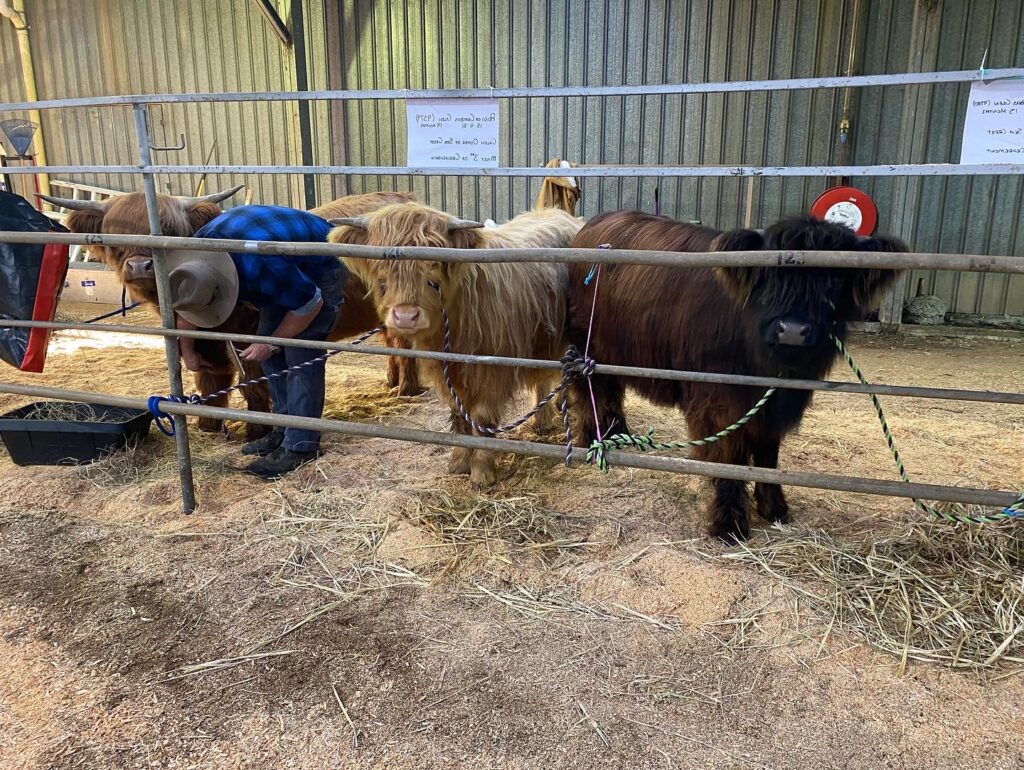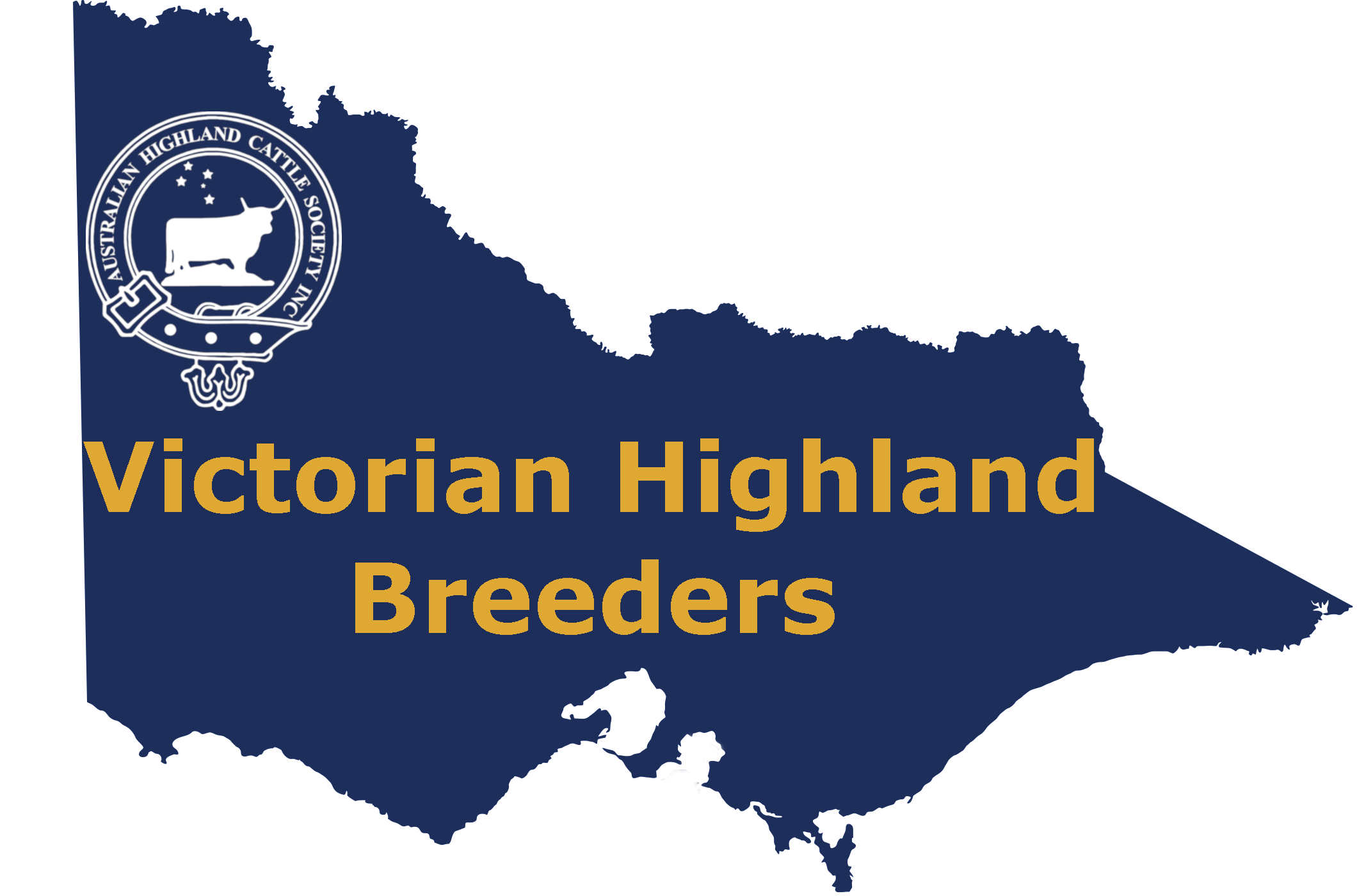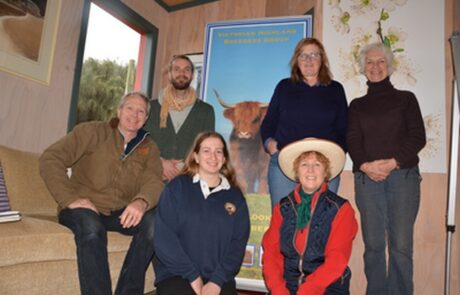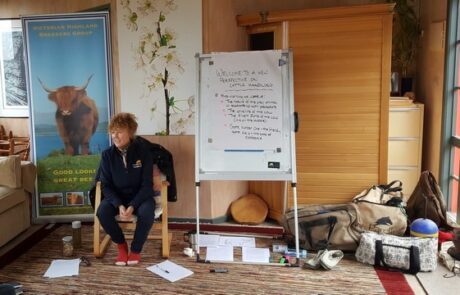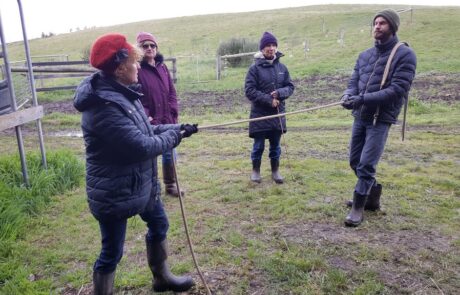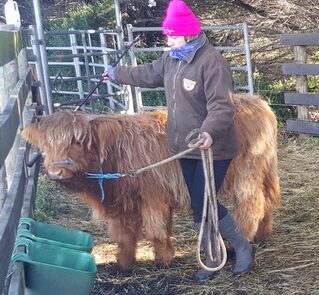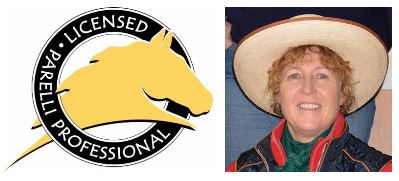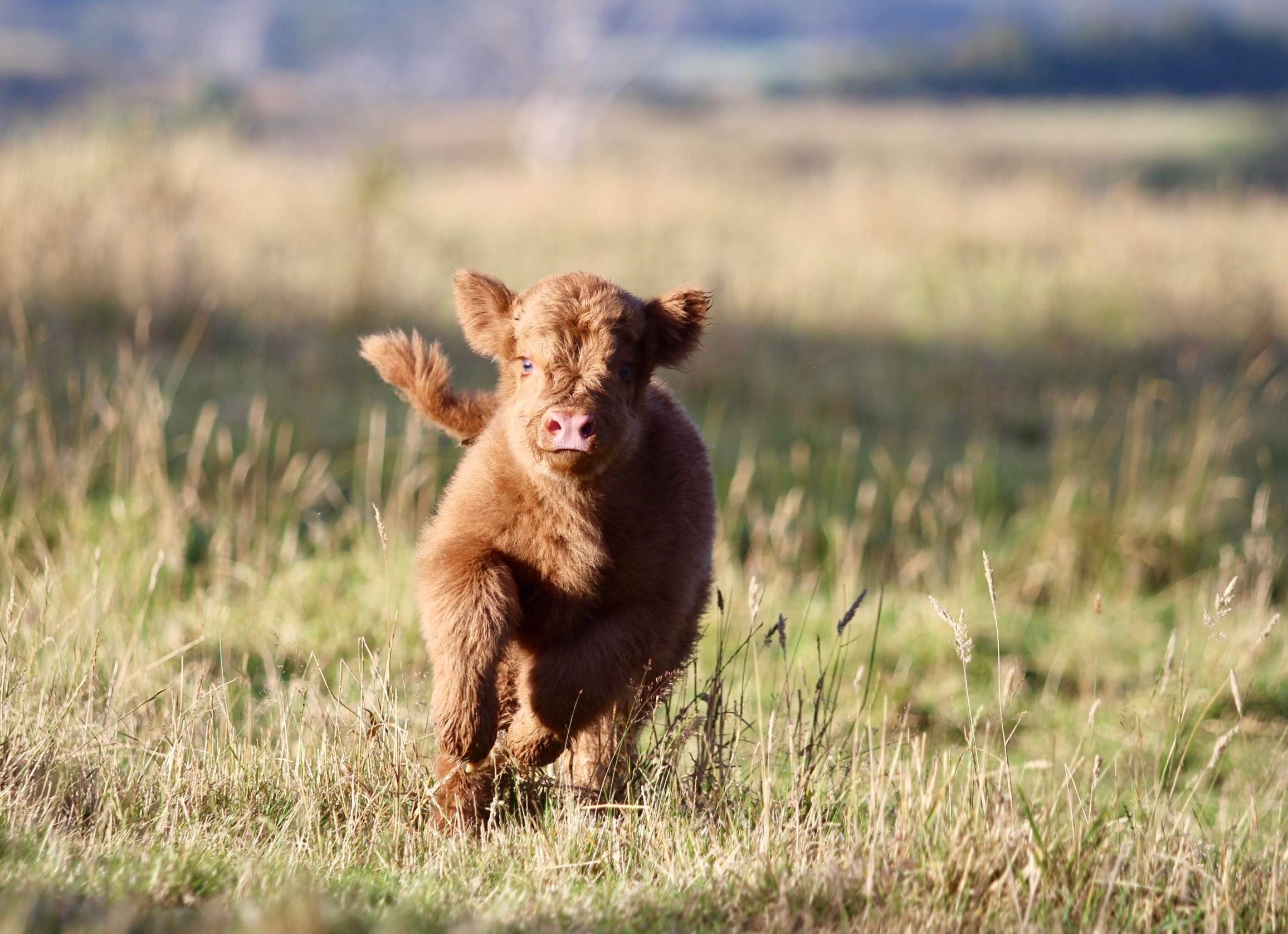Back in the day, cattle were halter “broken” by forcing on a halter and tying them to a post until they stopped fighting. Nowadays we seek a gentler way – Kaye Thomas, a Parelli Instructor (Pat Parelli is a world renowed natural horsemanship practioner) joined the VHBG in Flinders to impart some of her wisdom on applying these techniques to cattle, and then workshopping them on some weaners. She shares some of her insights here.

It was a windy, cold day as l drove my little car down towards Flinders which is a little town located on Bass Straight on the Victorian Peninsula in Australia. The conditions were rugged and my host was right – be prepared for whatever wild weather conditions could be thrown at me. It was winter time after all. l was feeling a bit like James Herriot the Veterinarian in All Creatures Great and Small. I had my gumboots, thick rain jacket, woolly hat, gloves and a car full of halters, leads, carrot sticks, buckets and grooming tools & l really didn’t know what to expect.
The reason for my drive wasn’t for the usual horsemanship clinic but was a request from an established Veterinary surgeon who is also a passionate breeder of Highland Cattle. He wanted to know if, as a behaviourist, l could shed some light about a new perspective on cattle handling. So, l agreed to volunteer three days of my time, discussing techniques and handling cattle with a small group of cattle owners from the Victorian Highland Breeders Group.
There would be seven weaned Highland calves to develop and a older heifer that had already been taught to lead and had an established career in the show ring. Great. We could look at the “start” by handling the untouched weaners and we could look at the finished picture too, which was the heifer that could lead and go places.
Since a young child l was always outside playing on our farm and quite often the majority of children’s playmates on a farm are the animals. It’s a magnetic combination and one that offers a wonderful learning for both species. We also had a 1,500-acre cattle stud and l really enjoyed helping my father prepare the calves for weaning, haltering, leading, grooming, tying-up, transporting & then some of them would be taken to shows. It was something that l did with my father throughout my teenage years but it wasn’t always pretty, but that’s all we knew back then.
Then l also went and spend years working on a huge cattle station up in the Northern Territory of Australia as a Jillaroo, where we mustered on horseback, worked in the stock yards, sleeping out under the stars in swags and we also built miles upon miles of fence lines to keep those cattle in one place. Working in such remoteness, with such wild cattle taught me a whole new skill set, not only mustering but in the stock yards too.
This cattle property in Flinders however, was one of the best l had ever seen in that area. It was split into two and the paddocks on the main spread ran all the way to the sea – the stunning Bass Strait. There were hills, trees, creek crossings, living dams and the most spectacular Highland cattle on the second property too. These cattle were winners of many, many prestigious awards and they had the grandeur & presence that reflects that winning status. Bronwyn, the owner, who is also a naturopath, could walk through the paddocks rubbing on them as she chose and talking to them by name (around 50 head) with the cattle completely content with her interaction. This truly was the exchange (Principle number three), exactly like the partnership we look for with our horses too.
Handling cattle and preparing them for a lifetime of human interaction & environments can be a skill in itself. Whether it is preparing cattle for a show, teaching a cow to stand to be milked, teaching cattle to be haltered, teaching cattle to lead, taming cattle, doctoring a sick cow, weaning cattle, teaching cattle to tie up or to walk through confined spaces, the philosophy & principles are similar to what we know through Parelli. Like the horse, the cow is an observer. They think quickly but generally speaking, move slow unless alarmed. They notice so much detail from: shadows, to smells, to noises and the tiniest of movements. Being a provider to cattle in scary new environments (before we ask too much of them) allows them the time to relax, let down and think more about bonding with us.
Looking at life from the cows perspective gives us a respectful appreciation of this amazing animal and all that they can provide and what we can gain and achieve with them.
It must be a willing exchange between the cow & the human.
This exchange also provides us with a quiet discipline for ourselves as we focus more on positive reinforcement, sequence & timing. Consistent positive patterns began to take shape as the weaners confidence grew and we got more adept with our skills when teaching them.
It was a small group but a great group. We discussed, exchanged, googled, shared meals and enjoyed hours each day developing the weaners. All the information that we brought together as a group gave us a greater appreciation of how to work with the nature of the cow and solve the normal resistances before they even begin. This is one of the many secrets we learnt & thank you to Pat and Linda Parelli for my decades of teaching to enable me to transfer this information to cattle owners.
Subjects covered were: Philosophy, Prey/Predator differences, Facility, Mustering, Tools, Taming first, Preparation for haltering, Haltering and finally Leading (drifting & guiding stages). All done stress free & ethically with the cow’s wellbeing as priority.
Note: None of the cattle on the property ever go to slaughter. They are sold as companions, kept for breeding or showing, or live their days enjoying the sea air & stunning vista.
Kaye Thomas,
Parelli four star Instructor & Senior Horse Development Specialist. moon.rider@bigpond.com Rutherglen, Australia.
